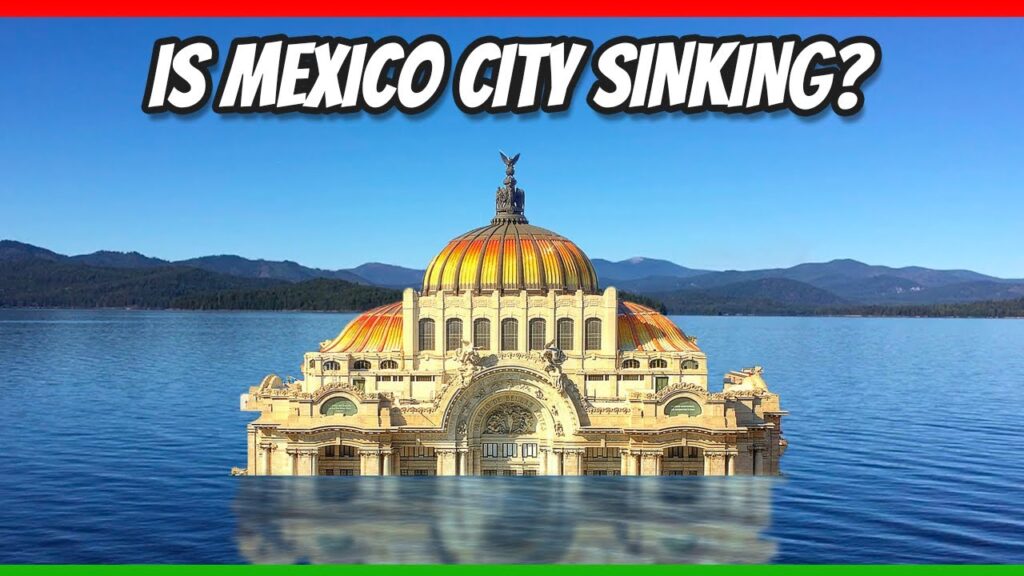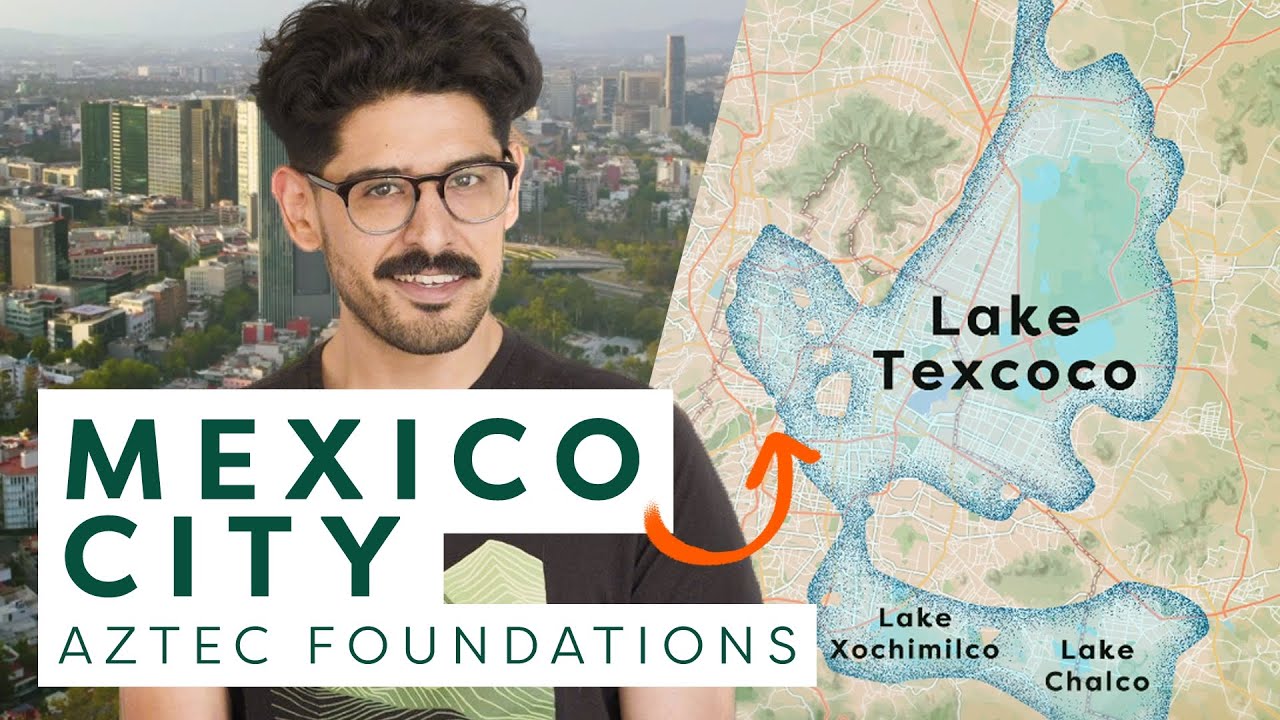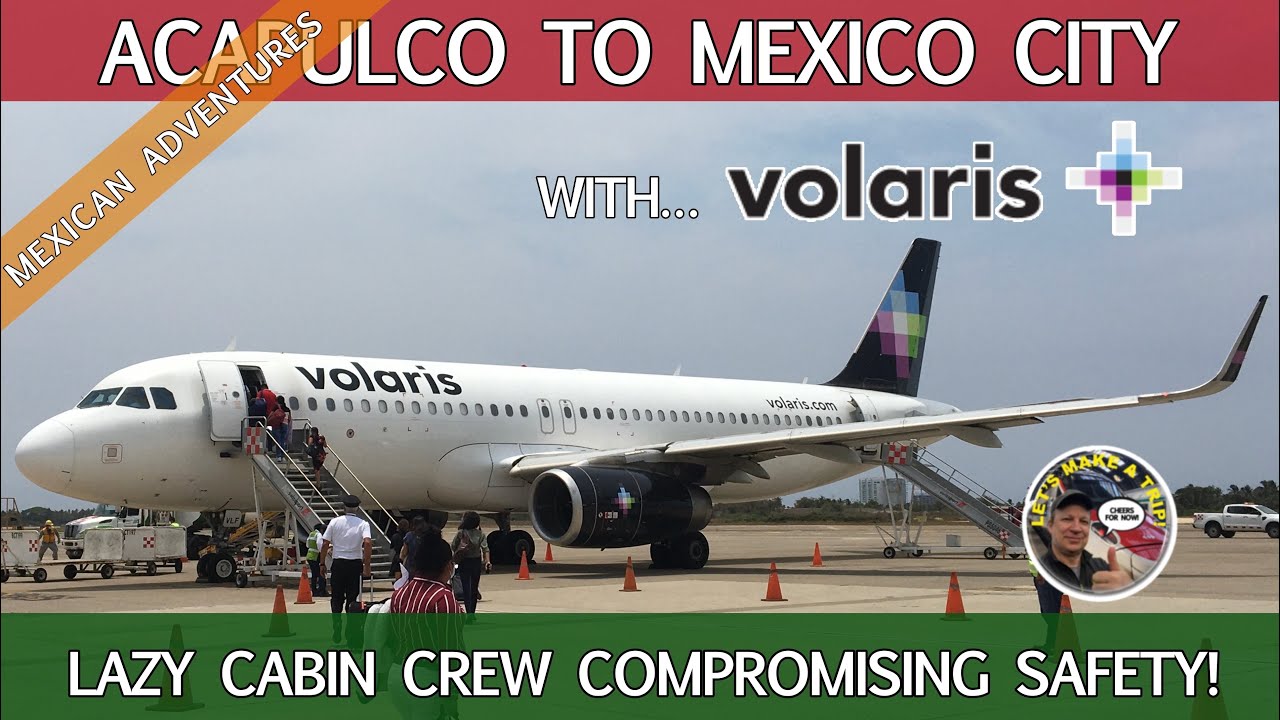The Alarming Rate of Mexico City’s Sinking
Mexico City, a dazzling hub for travelers seeking a blend of modernity and rich history, faces an alarming and less discussed challenge: its continuous sinking. This phenomenon, not immediately visible to the casual observer, poses long-term risks to the city’s infrastructure and heritage sites. Understanding the gravity of this situation is crucial for anyone fascinated by the unique blend of culture and adventure that Mexico City offers.
Historically, Mexico City was built on an ancient lake bed, which has led to its current predicament. The excessive extraction of groundwater for the city’s growing demands has caused the land to compact and sink. Some areas of the city are descending at a rate of up to 12 inches per year, a figure that should concern not only residents but also visitors who treasure this iconic destination. This sinking has led to uneven ground levels, resulting in damaged buildings and infrastructure, and complicating sewage and water supply systems.
The impact on historical landmarks is particularly distressing. Structures such as the Metropolitan Cathedral and the National Palace have experienced significant tilting and sinking, threats that undermine their structural integrity and cultural legacy. Efforts to preserve these monuments are ongoing, but the relentless sinking poses constant challenges to conservation attempts.
In response to this plight, innovative engineering solutions are being explored. For instance, the introduction of deep-seismic sounding techniques to better understand the subsoil conditions and strategies to inject concrete to stabilize the foundation of buildings are part of the efforts to slow down the sinking. However, these measures are costly and require significant investment, raising questions about the sustainability and long-term efficacy of such interventions.
The situation of Mexico City’s sinking is not just a local concern but a poignant example of the broader environmental and urban challenges facing our global community. As visitors continue to explore the vibrant streets, ancient ruins, and bustling markets of Mexico City, awareness of this underlying issue adds a complex layer to the travel experience, reminding us of the delicate balance between natural history and human progress.
Understanding the Scientific Basis
Exploring Mexico through travel and adventure is not just about indulgence in the country’s rich cultural heritage or breathtaking landscapes; it’s also about grasitating the underlying scientific elements that shape these experiences. From the formation of stunning beaches to the rich biodiversity found in rainforests and deserts, science is deeply intertwined with the natural wonders of Mexico.
Geological Wonders: Mexico’s diverse landscape is a product of millions of years of geological activity. The country is home to various mountain ranges, volcanoes, and unique geological formations like the Copper Canyon, which were formed through the movement of tectonic plates and volcanic activity. Understanding the science behind these formations adds a layer of awe and appreciation during visits.
Biodiversity and Conservation: Mexico is one of the world’s most biodiverse countries, thanks to its wide range of climates and ecosystems. This biodiversity is a result of evolutionary processes, natural selection, and adaptation. The conservation efforts in Mexico are deeply rooted in scientific research that aims to understand and preserve the intricate web of life found here.
Climate Patterns: The varied climate zones across Mexico, from arid deserts to tropical rainforests, are influenced by global climate patterns and regional topography. Understanding these patterns is crucial for appreciating the seasonal variations and weather phenomena that shape the travel experience. For instance, the timing of the monarch butterfly migration is closely tied to climatic conditions.
Marine Ecology: Mexico’s coastline is a playground for marine life, including coral reefs in the Caribbean and the astounding aquatic biodiversity of the Pacific. These marine ecosystems are underpinned by complex scientific processes, such as coral polyp photosynthesis and nutrient cycles, which are integral to the health of these environments. Diving into the science behind these ecosystems can enrich any adventure along Mexico’s shores.
Historical Context and Current Rate of Sinking
Mexico City, now a bustling metropolis, has a fascinating and somewhat alarming historical basis related to its foundation and development. Originally, the city was built on an island in Lake Texcoco by the Aztecs in the 14th century. This unique geological setting has led to a continuous battle with the elements, particularly water. The Aztecs had developed sophisticated systems of dams and canals to manage the lake waters, but the Spanish, after their conquest in the 16th century, disregarded these methods, leading to the first of many flooding problems. Over the centuries, as the lake was drained to prevent floods, the city began to sink into the soft lakebed soil, a problem that persists today.
In the 20th century, the rate of sinking became particularly concerning as urban development intensified. Buildings, streets, and entire neighborhoods began to show the effects of uneven sinking, leading to damaged infrastructure and the need for continuous repairs and adaptations. This sinking is attributed to the extraction of groundwater from the aquifers beneath the city. As the water is pumped out to supply the city’s burgeoning population, the ground compresses and settles, a process known as subsidence. Various sections of the city are sinking at different rates, with some areas reported to be sinking up to 12 inches (about 30 cm) per year.
The current rate of sinking of Mexico City poses significant challenges for urban planning, preservation of historic sites, and infrastructure maintenance. Efforts are underway to mitigate this issue, including stricter regulations on water use and extensive engineering projects to reinforce the ground and buildings. However, the city’s history and its ongoing battle with its geological foundation serve as a reminder of the intricate relationship between human settlements and their natural environments. This sinking not only affects the physical landscape but also has implications for cultural heritage, as many historical buildings are at risk, highlighting the importance of integrating environmental considerations into urban development strategies.
Implications for Buildings and Infrastructure
In exploring the vast landscapes of Mexico through travel and adventure, understanding the implications for buildings and infrastructure is crucial. The country’s diverse geography, encompassing mountains, forests, deserts, and coastlines, not only adds to its beauty and allure for adventurers but also presents unique challenges for the construction and maintenance of infrastructure. These challenges are not just technical but also deeply intertwined with environmental and cultural considerations.
The first aspect to consider is the impact of natural elements on buildings and structures. Mexico’s position along the Pacific Ring of Fire makes it prone to seismic activity, necessitating earthquake-resistant construction practices. Additionally, coastal areas face the dual challenges of managing erosion and withstanding hurricanes. This has led to innovative architectural solutions and construction materials designed to mitigate these risks, ensuring the safety and resilience of buildings against natural disasters.
Another implication revolves around the integration of infrastructure into natural and historical settings. As a country rich in cultural heritage, Mexico has stringent regulations for construction in proximity to archaeological sites and in areas of environmental significance. This often requires architects and builders to adopt creative strategies that respect and preserve the natural and historical context of their locations. The use of local materials, traditional construction techniques, and designs that blend with the landscape are common practices aimed at minimizing the environmental footprint of new constructions.
Infrastructure development in Mexico also focuses on sustainability and environmental protection. The advent of eco-friendly construction methods and materials has gained momentum, driven by both governmental regulations and a growing awareness among travelers of the importance of sustainable tourism. Renewable energy sources, water conservation systems, and waste treatment technologies are increasingly integrated into the construction of hotels, resorts, and other facilities catering to adventure-seekers, aligning with global efforts to combat climate change.
Lastly, the advent of technology has significantly impacted how buildings and infrastructure are planned, constructed, and maintained in Mexico’s travel and adventure sectors. The use of Geographic Information Systems (GIS) for site selection, drone technology for aerial surveys, and advanced materials for better performance are examples of how modern technology is enabling more efficient, reliable, and sustainable infrastructure solutions. These innovations not only enhance the travel experience but also contribute to the preservation of Mexico’s stunning landscapes for future generations of adventurers.
Government and Community Response
The government and community response to bolstering tourism and adventure experiences in Mexico has been notable. Recognizing the immense potential of this sector for economic development and cultural exchange, numerous initiatives have been undertaken at both federal and local levels. These efforts aim to ensure safety, enhance the quality of tourist services, and promote sustainable practices across popular and emerging destinations.
At the forefront, safety has been a paramount concern, with the government actively working to improve conditions and reassure both locals and visitors of their well-being while exploring Mexico’s diverse landscapes. Enhanced security measures, increased patrols in tourist areas, and collaboration with local communities to maintain a safe environment are just a few steps that have been taken. This concerted effort has significantly contributed to a positive perception among adventure travelers, encouraging more people to explore with confidence.
Sustainability is another critical focus of the government and community response. Initiatives have been launched aiming at conservation of the natural environment, protection of wildlife, and preservation of historical sites, ensuring they remain unspoiled for future generations. These green initiatives not only enhance the adventure experience but also foster a culture of respect and responsibility towards nature among travelers and local populations alike.
Communities across Mexico have actively participated in these endeavors, often leading the way in sustainable tourism practices. From offering eco-friendly accommodation options to organizing tours that directly benefit the local economy and environment, the community involvement has played a vital role in reshaping Mexico’s adventure tourism sector. The combined efforts of the government and communities underline a strong commitment to providing a safe, enriching, and sustainable travel experience for all adventurers looking to discover Mexico’s natural and cultural treasures.
Looking Towards a Sustainable Future
Exploring Mexico’s rich tapestry of cultural experiences and breathtaking natural beauty offers travelers an unparalleled adventure. However, as we venture into its enchanting landscapes, the importance of embracing sustainable practices becomes paramount. Sustainable travel in Mexico is not just a fleeting trend; it’s a commitment to preserving its vibrant culture and pristine environments for future generations to marvel at and enjoy.
Sustainable tourism in Mexico encompasses a broad spectrum of practices, from supporting local economies to conserving natural resources. Visitors have the unique opportunity to engage with community-led tourism initiatives. These projects often involve local guides sharing insights into traditional ways of life, indigenous culture, and efforts to maintain the ecological integrity of their surroundings. By choosing such experiences, travelers not only gain a deeper understanding of Mexico’s heritage but also contribute to the sustainability of its communities.
Eco-friendly accommodations are on the rise, blending luxury with conservation. Properties powered by renewable energy, implementing water-saving techniques, and constructed with sustainable materials are becoming more prevalent. These lodgings seek to minimize their carbon footprint, offering guests a guilt-free stay amidst nature’s grandeur. They prove that comfort need not be sacrificed for the sake of eco-consciousness.
Mexico’s natural reserves and protected areas are the cornerstone of its environmental conservation efforts. Parks such as the monarch butterfly reserves or the Sian Ka’an Biosphere Reserve offer travelers awe-inspiring experiences while ensuring the protection of these habitats through regulated tourism. Engaging in responsible wildlife tours and adhering to park guidelines, visitors can witness the country’s biodiverse ecosystems without leaving a negative impact.
Lastly, sustainable travel in Mexico encourages the reduction of single-use plastics and promotes responsible waste management among both locals and tourists. Initiatives like beach clean-ups and educational campaigns on the importance of preserving marine life are becoming more widespread, fostering a culture of conservation. Travelers are urged to use reusable water bottles, bags, and other eco-friendly products to help maintain Mexico’s unparalleled beauty.
By integrating these sustainable practices into our travel choices, we not only experience the profound beauty and culture of Mexico but also contribute to a global movement towards preserving our planet’s wonders. Embracing sustainability in our adventures leads us towards a future where the treasures of Mexico continue to inspire awe and respect across generations.


